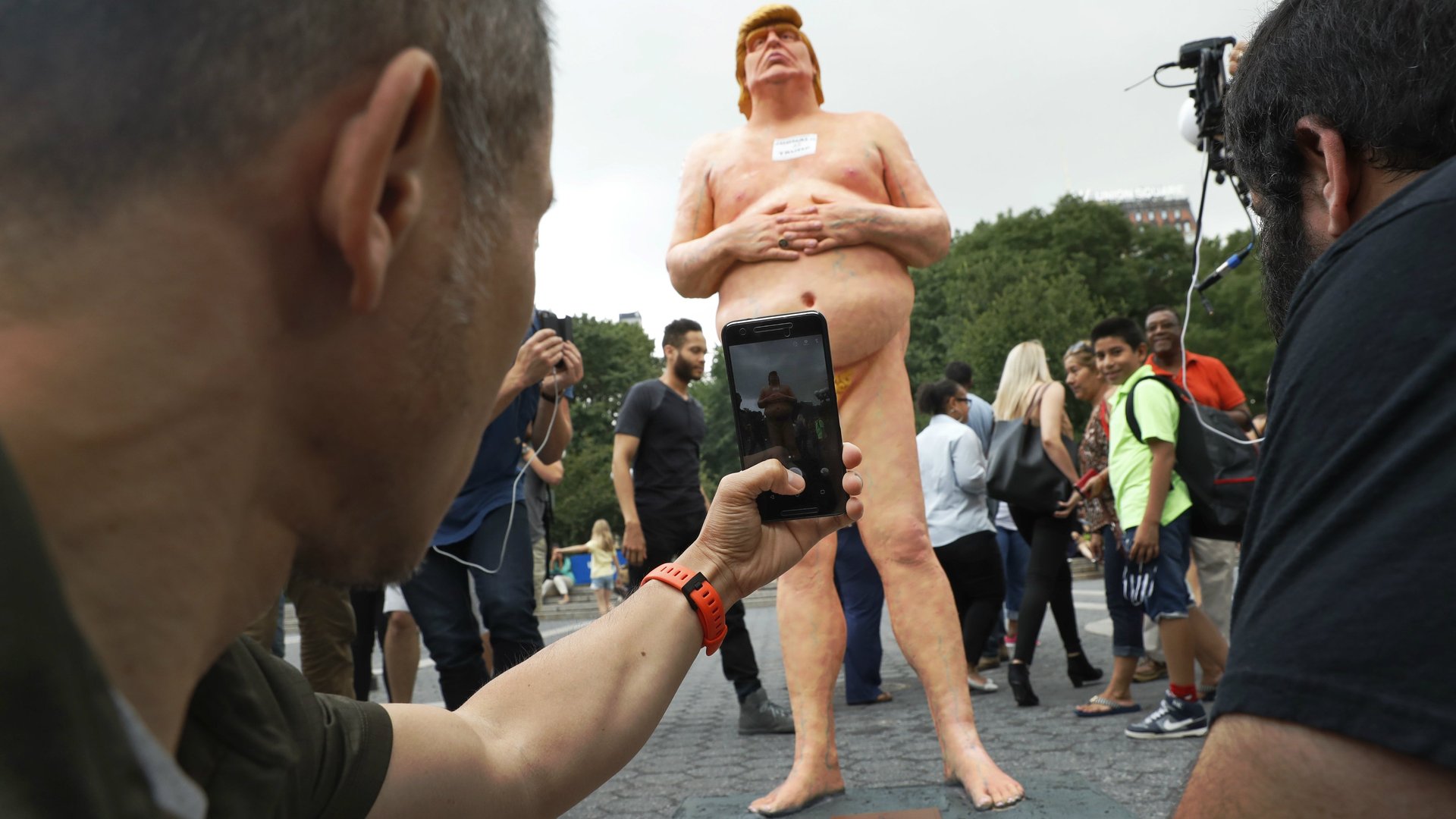Is there anything really funny about a naked Donald Trump statue?
They cropped up overnight in New York, San Francisco, Cleveland, Seattle, and Los Angeles. Five duplicate statues laying bare, literally, one artist’s vision of a totally naked Donald J. Trump.


They cropped up overnight in New York, San Francisco, Cleveland, Seattle, and Los Angeles. Five duplicate statues laying bare, literally, one artist’s vision of a totally naked Donald J. Trump.
As word about the five statues of the Republican candidate for US president spread on Aug. 18, my phone rang, a call from a close friend and disenchanted Republican who recently decided she’d cast her vote in November for Hillary Clinton.
“Did you see the statue?” she asked, a tinge of giddiness crackling over the line. “You should go.”
Called The Emperor has no Balls, the statues were an homage to Hans Christian Andersen’s classic fable, The Emperor’s New Clothes, about a ruler’s inability to recognize his own shortcomings. The statues, put up by the anarchist collective INDECLINE, gave the Trump statue a generous waist that only highlighted its nubby penis.
My friend and I laughed about it, marveling at how the 2016 election cycle had created yet another strange line of discourse. Meanwhile, the five naked Trumps drew attention. People crowded around them, posed for selfies, pointed, and laughed. The likeness of Trump’s frowning face drove a day of political commentary.
News of the statues climaxed as city governments removed them from public spaces, noting—some with humor—the lack of a proper permitting.
But even as the statues spread across social media, some criticism emerged, about how this kind of personal mockery degrades our political dialogue, as well as how it expresses entrenched and pernicious ideas about the human body.
One widely shared image, by an artist and performer who identifies as intersex, gave the candidate a placard for modesty, bearing the message “SHAME ME FOR MY BEHAVIOR NOT MY BODY.”
“Lord knows I don’t like Trump,” a columnist at the Establishment wrote. “My issue with these statues isn’t that I’m sensitive, or that I’m prudish—or even righteous. The joke itself is bad. It relies on body-shaming, fatphobia, toxic masculinity, and transphobia to take jabs at Trump.”
Thomas McBee, an author and editor at Quartz, put it poignantly in a Facebook post:
The same instinct that inspires ridicule here is what makes life scary and painful for those of us whose bodies don’t look the way they “should.”
It’s a question worth asking: Is there anything actually virtuous or clever, or even funny, about the statues?
And what separates them from the brand of vulgarity behind the t-shirts some Donald Trump supporters choose to wear at his political rallies, like the ones that read, “Trump that bitch,” and “KFC Hillary Special: 2 fat thighs, 2 small breasts…left wing”?
Certainly the public response would have been different if the artist had planted five statues of a naked Hillary Clinton across the country—especially among progressives. But whether a person is conservative or liberal, the glee at this sort of art is ultimately derived from malice.
The argument has been made on social media and elsewhere that to criticize the art on the basis of body shaming misses the intent of the artist’s political statement, which highlights Trump’s own public comments referring to the size of his penis. That was something that came up during the Republican primaries, and the implication is that because Trump addressed it publicly, he tacitly invited more conversation about it:
But does someone really invite body shaming? And how different is that argument from the one some people use to suggest women invite cat-calling and critiques of their bodies based on the clothes they choose to wear? It’s the sort of dialogue that reinforces sexism, homophobia, transphobia, and general physical insecurity.
Aside from preying on people’s anxieties and generally being mean-spirited, perhaps the most depressing aspect of this kind of political dialogue is that it accomplishes nothing. It might draw a momentary wry smile, but it doesn’t inspire thoughtful conversation about foreign policy or race relations or the pressures small-business-owners face.
It should perhaps instead leave us looking in the mirror, and doing some soul-searching about how we want America to look—for ourselves and for generations to come. Humanity can do better than this, whether the emperor is wearing clothes or not.